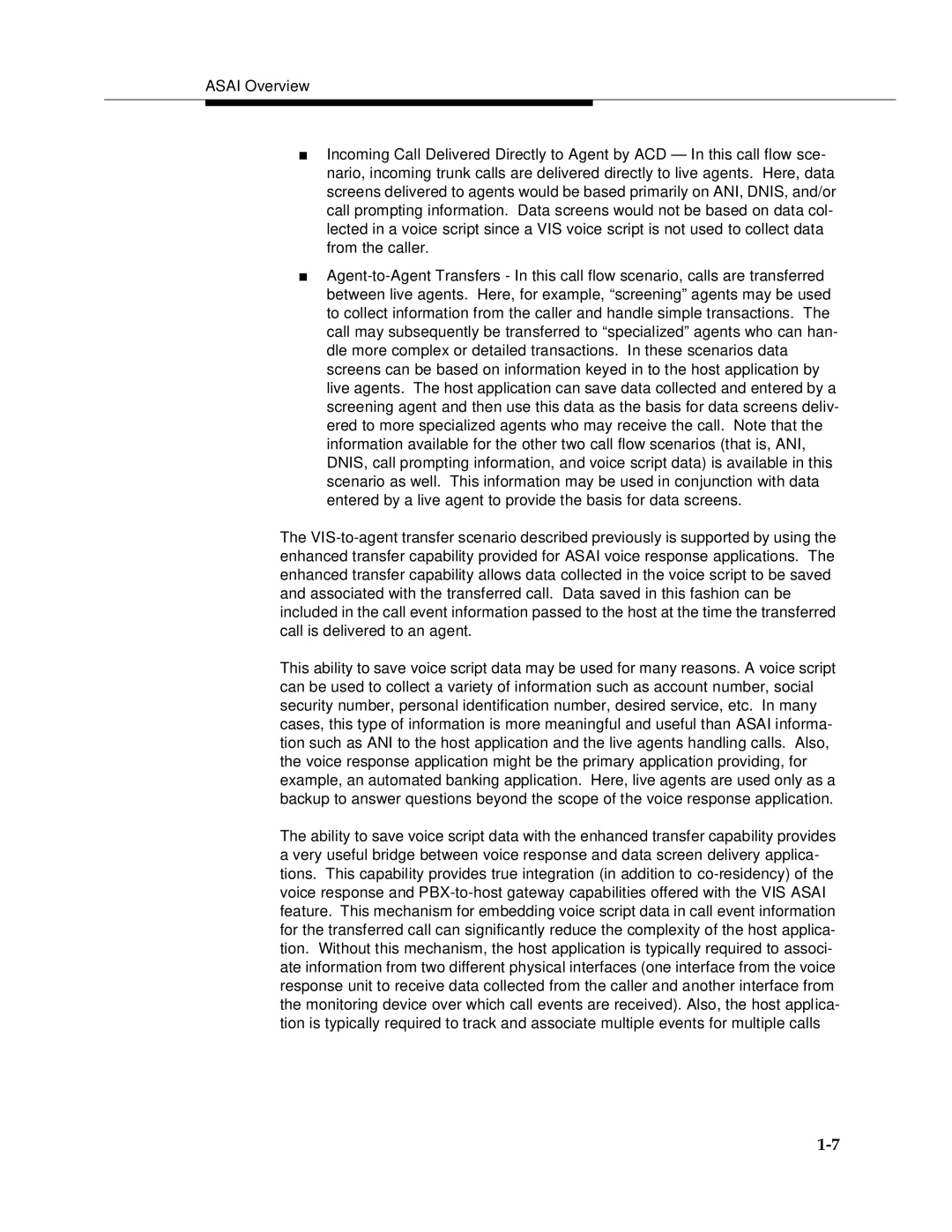■Incoming Call Delivered Directly to Agent by ACD — In this call flow sce- nario, incoming trunk calls are delivered directly to live agents. Here, data screens delivered to agents would be based primarily on ANI, DNIS, and/or call prompting information. Data screens would not be based on data col- lected in a voice script since a VIS voice script is not used to collect data from the caller.
■Agent-to-Agent Transfers - In this call flow scenario, calls are transferred between live agents. Here, for example, “screening” agents may be used to collect information from the caller and handle simple transactions. The call may subsequently be transferred to “specialized” agents who can han- dle more complex or detailed transactions. In these scenarios data screens can be based on information keyed in to the host application by live agents. The host application can save data collected and entered by a screening agent and then use this data as the basis for data screens deliv- ered to more specialized agents who may receive the call. Note that the information available for the other two call flow scenarios (that is, ANI, DNIS, call prompting information, and voice script data) is available in this scenario as well. This information may be used in conjunction with data entered by a live agent to provide the basis for data screens.
The VIS-to-agent transfer scenario described previously is supported by using the enhanced transfer capability provided for ASAI voice response applications. The enhanced transfer capability allows data collected in the voice script to be saved and associated with the transferred call. Data saved in this fashion can be included in the call event information passed to the host at the time the transferred call is delivered to an agent.
This ability to save voice script data may be used for many reasons. A voice script can be used to collect a variety of information such as account number, social security number, personal identification number, desired service, etc. In many cases, this type of information is more meaningful and useful than ASAI informa- tion such as ANI to the host application and the live agents handling calls. Also, the voice response application might be the primary application providing, for example, an automated banking application. Here, live agents are used only as a backup to answer questions beyond the scope of the voice response application.
The ability to save voice script data with the enhanced transfer capability provides a very useful bridge between voice response and data screen delivery applica- tions. This capability provides true integration (in addition to co-residency) of the voice response and PBX-to-host gateway capabilities offered with the VIS ASAI feature. This mechanism for embedding voice script data in call event information for the transferred call can significantly reduce the complexity of the host applica- tion. Without this mechanism, the host application is typically required to associ- ate information from two different physical interfaces (one interface from the voice response unit to receive data collected from the caller and another interface from the monitoring device over which call events are received). Also, the host applica- tion is typically required to track and associate multiple events for multiple calls
